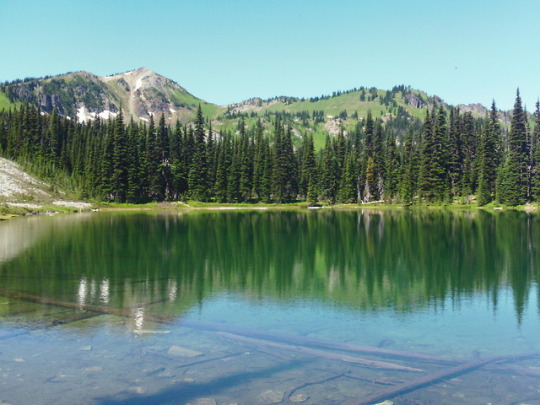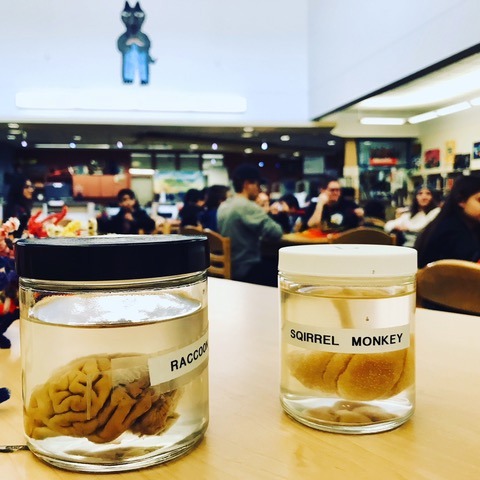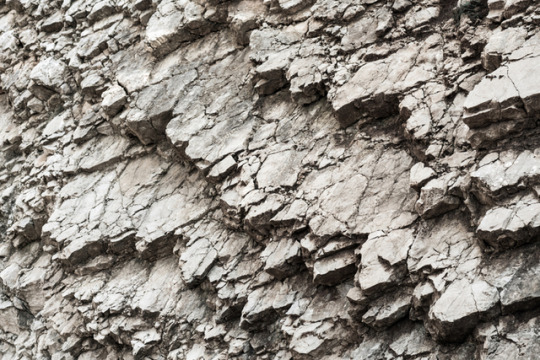#psuclas
Photo

NW Noggin (Northwest Neuroscience Outreach Group: Growing in Networks), a group with close ties to PSU that brings scientists and artists together to inform the public about neuroscience research, will receive a Regional Arts & Culture Council Juice award for providing atrs integrated neuroscience education to the public on Thursday, March 1, 2018.
4 notes
·
View notes
Photo

Angela Strecker (Environmental Science and Management) and Jeffery Brittain (Environmental Science and Management Master’s graduate) co-authored “The Interactive Effect of Multiple Stressors on Crustacean Zooplankton Communities in Mountane Lakes” published in Water Resources Research. The study identified responses of zooplankton communities from two lakes (fish present vs. absent) in Mount Rainier National Park to manipulations simulating an episodic disturbance of acidification and eutrophication via nitrogen addition in mesocosms.
Abstract
Non-native fish introductions have altered thousands of naturally fishless montane lakes, resulting in cascading food web repercussions. Nitrogen deposition has been recognized as an anthropogenic contributor to acidification and eutrophication of freshwater ecosystems, which may affect the abundance and composition of planktonic communities. This study identified responses of zooplankton communities from two lakes (fish present vs. absent) in Mount Rainier National Park to manipulations simulating an episodic disturbance of acidification and eutrophication via nitrogen addition in mesocosms. Zooplankton communities from lakes with different food web structure (i.e., fish present or absent) responded differently to the singular effects of acid and nitrogen addition. For instance, zooplankton biomass decreased in the acid treatment of the fishless lake experiment, but increased in response to acid in the fish-present experiment. In contrast, the combination of acid and nitrogen often resulted in weak responses for both lake types, resulting in non-additive effects, i.e., the net effect of the stressors was in the opposite direction than predicted, which is known as a reversal or ‘ecological surprise'. This experiment demonstrates the difficulty in predicting the interactive effects of multiple stressors on aquatic communities, which may pose significant challenges for habitat restoration through fish removal.
5 notes
·
View notes
Photo

Dilafruz Williams, Education faculty; Judy Bluehorse Skelton, Indigenous Nations Studies faculty; Sybil Kelley, Education faculty; and others co-authored, "Learning Gardens for All: Diversity and Inclusion" published in The International Journal of Sustainability in Economic, Social, and Cultural Context, Vol. 13, No. 4, pp. 41-63.
1 note
·
View note
Photo

PSU students bring brain research and art to Eastern Oregon. PSU's own Emily Weiss (Applied Psychology) will present her graduate research on sleep and school, along with innovative mural artist Jamaali Roberts - at Velo Cult on Thursday, March 1 (6-8pm)
1 note
·
View note
Photo


In Nepal, Jeremy Spoon, anthropology professor, and collaborators from Nepal and the US recently facilitated a national workshop bringing together community members, elected officials, and international and national Non-Governmental Organizations to share personal experiences and the findings Spoon and fellow researchers have collected from communities affected by the 2015 earthquakes in Nepal’s Gorkha and Rasuwa Districts. A recent article highlighting the workshop was published at the website Nature Khabar: http://naturekhabar.com/en/archives/7745. Read more about Spoon’s research in Nepal in the article “Drawing Lessons from a Catastrophe at “the Roof of the World.”
#portland state university#portlandstateresearch#psuresearch#psuclas#psuanthropology#psusustainability
2 notes
·
View notes
Photo

Feeling the Fall time blues? Not enough sunlight? Come and see a talk about the role that Vitamin D plays in regulating seasonal responses in animals.
2017-2018 Research Rounds
Speaker Series Presents
Dr. Jason Podrabsky, Professor, Biology
Tuesday, November 14, 2017
12pm-1pm
Smith Memorial Student Union (SMSU), 298
Free and open to all! Bring your lunch and learn more about research at PSU.
The celestial movements of the Earth and Moon and the resulting predictable seasonal changes profoundly influenced the evolution of life on earth. Thus, it is not surprising that most organisms have mechanisms to sense and respond to seasonal cues such as photoperiod and temperature. Vitamin D, which fungi, algae, flowering plants, and a variety of animals synthesize using these mechanisms in combination with sunlight, is a potent signaling molecule of ancient origin. In humans, vitamin D plays an essential role in calcium homeostasis, control of the cell proliferation, immune function, and development of the heart and brain. Vitamin D acts through the vitamin D receptor, which can regulate the expression of hundreds and perhaps thousands of genes simultaneously. Vitamin D signaling, as was recently discovered, controls seasonal dormancy in embryos of annual killifish. Other animals that employ dormancy to survive unfavorable conditions have similar molecular pathways. Dr. Podrabsky hypothesizes these ancient pathways have evolved to integrate environmental cues into significant life history decisions across a diversity of animals.
1 note
·
View note
Photo

OPB Think Out Loud: Restoring Artwork With Chemistry
Listen to the story on OPB.
You can learn a lot about artwork by doing a chemical analysis. PSU chemistry professor Tami Lasseter Clare just got a grant from the Mellon Foundation to study artwork at five different museums in the Northwest- it’s the first time many of those institutions will have access to a conservation scientist.
1 note
·
View note
Text
Shirley A. Jackson, Black Studies faculty, recently presented a paper, “Ultranationalism: (E)Racing the ‘Enemy’ and (Re)Claiming Space,” at the International Research Congress of the National Association for African American Studies, in Durban, South Africa.
1 note
·
View note
Video
youtube
Assistant Professor Peter Boghossian (Philosophy) recently appeared in Ben Fama Jr.’s documentary film Reasons To Believe. Watch a Q & A with Fama and Boghossian here: https://youtu.be/nQ5PAYN23h4
Reasons To Believe is a thought-provoking documentary by filmmaker Ben Fama Jr., that explores the psychology and science of belief and why we believe, sometimes falsely, in things that may not match up with reality. Facilitated by leaders in the fields of science, philosophy, neuroscience, moral reasoning, psychology, perception, memory formation, and indoctrination, these experts answer a variety of thought provoking questions and provide tangible structure to the definition and creation of belief in the human brain. Fama asks the question: Why do we believe? Starring Michael Shermer, Peter Boghossian, Jennifer Whitson, Caleb Lack and Chad Woodruff.
1 note
·
View note
Photo

Jack Straton, Physics and University Studies faculty, had one of his photographs chosen to be part of Pushing Paper: Realizing the Potential of the Medium, an international juried joint show of 2D and 3D artists in Poughkeepsie, N.Y., Aug. 11–Sept. 22, 2018.
Jack Straton is a photographer in Portland, Oregon, USA, whose "heritage" is the West Coast school, creating abstractions and landscapes with film cameras ranging form 8x10" to 35mm in color and black and white. His creative expressions also extend to quantum scattering theory, music, and anti-racist education. He earned a BFA in Photography from the U of O in 1977, worked as a professional Jazz drummer for three years, and in the 1980s earned a doctorate in Physics. He has been a community educator since 1985 when he founded Men Against Rape in Eugene, Oregon, and since 1998 has been an interracial dialogue group facilitator. Through all of this he has continued to devote about a quarter of his waking hours to photography.
0 notes
Photo

Peter Moeck, Physics faculty, authored an article titled, “On classification approaches for crystallographic symmetries of noisy 2D periodic patterns”, in preprint in Cornell University, February 2019.
The classifications approaches for the crystallographic symmetries of patterns that are more or less periodic in two dimensions are critically reviewed and their relative performance qualitatively evaluated. The information theory based approach of the author utilizes digital images and turns out to be the only one that allows for fully objective classifications of the crystallographic symmetries, i.e. Bravais lattice type, Laue class, and plane symmetry group, of noisy real-world images. His information theory based crystallographic symmetry classifications utilize geometric bias-corrected sums of squared residuals, i.e. pertinent first order information, and enable the most meaningful crystallographic averaging in the spatial frequency domain, which suppresses generalized noise much more effectively than traditional Fourier filtering. Taking account of the fact that it is fundamentally unsound to assign an abstract mathematical concept such as a single symmetry type, class, or group with 100 % certainty to a more or less 2D periodic record of a noisy real-world imaging experiment that involved a real-world sample, the information theory based approach to crystallographic symmetry classifications delivers probabilistic classifications. Recent applications of deep convolutional neural networks to classifications of crystallographic translation symmetries in 2D and crystals in three dimensions are discussed as these machines deliver probabilistic classifications by non-analytical means.
0 notes
Photo

Bennett Gilbert, University Studies faculty, authored a book, A Personalist Philosophy of History, published by Routledge in January.
Historical study has traditionally been built around the placement of the human at the center of inquiry. The de-stabilized concepts of the human in contemporary thought challenge this configuration. However, the ways in which these challenges provoke new historical perspectives both expand and enrich historical study but are also weak and vulnerable in their concept of the human, lacking or omitting something valuable in our self-understanding. A Personalist Philosophy of History argues for a robust concept of personhood in our experience of the past as a way to resolve this conflict.
Focused on those who know history, rather than on the abstract properties of knowledge, it extends the moral agency of persons into non-human, trans-human, and deep history domains. It describes an approach to moral life through historical experience and study, rather than through abstractions. And it describes a kind of historiography that matches factual accuracy to both the constructed nature of understanding and to unavoidable moral purpose.
0 notes
Photo

Alex Ruzicka, Geology faculty, and former students and PSU graduates Katherine Armstrong and Kristy Schepker, as well as researchers Richard Greenwood and Ian Franchi (Open University, Milton Keynes, England), authored a paper titled "Petrology and Oxygen Isotopic Composition of Large Igneous Inclusions in Ordinary Chondrites: Early Solar System Processes and Oxygen Reservoirs" published in Geochimica et Cosmochimica Act.
Large (>3.5 mm and up to 4 cm across) igneous inclusions poor in metal and sulfideare a minor but not uncommon component in ordinary chondrites, and have implications for the nature of physiochemical and melting processes in the early solar system. We obtained petrographic-chemical data for forty-two large igneous inclusions in ordinary chondrites of various groups (H, L, LL) and petrographic types (3–6) and oxygen isotope data for a subset of twelve of these inclusions and their host chondrites. Different inclusions formed both before and after the thermal metamorphism experienced by their host chondrites. The bulk chemical compositions of the inclusions vary broadly around whole-rock chondrite composition, comprise four main chemical types and some other variants, and show little evidence of having formed as igneous differentiates. Oxygen isotope compositions overlap ordinary chondrite compositions and are related to inclusion chemical type. Most prevalent in type 3 and 4 chondrites are inclusions, often droplets, of the vapor-fractionated (Vfr) chemical type, either enriched in refractorylithophile elements, or depleted in volatile lithophile elements, or both. These inclusions have low Δ17O (∼0.1–0.6‰) and high δ18O (∼4–8‰) values and formed in reservoirs with Δ17O lower than their hosts, primarily as evaporative melts and mixtures that probably experienced kinetic isotopic fractionation. Another chemical type (Unfr + K) has unfractionated abundances of lithophile elements except for being strongly enriched in K, a signature also found in some impact melts from melt rocks and melt breccias. These inclusions formed by impact melting of chondritic material and accompanying K enrichment. Inclusions with unfractionated (Unfr) lithophile element abundances are present in type 3–6 chondrites and are prevalent in type 5 and 6. Some are spatially associated with coarse metal-sulfide nodules in the chondrites and likely formed by in situ impact melting. Others were melted prior to thermal metamorphism and were chemically but not isotopically homogenized during metamorphism; they are xenoliths that formed in oxygen reservoirs different than the hosts in which they were metamorphosed. The latter inclusions provide evidence for nebular or collisional mixing of primitive materials prior to thermal metamorphism of asteroid bodies, including transport of H-like source materials to the L body, LL-like source materials to the L body, and low-Δ17O materials to the LL body. Feldspar-rich (FldR) inclusions have compositions similar to melt pockets and could have formed by disequilibrium melting and concentration of feldspar during an impact event to form large droplets or large masses. Overall, the results of this study point to important and varied roles for both “planetary” impact melting and “nebular” evaporative melting processes to form different large igneous inclusions in ordinary chondrites. Chondrules may have formed by processes similar to those inferred for large inclusions, but there are important differences in the populations of these objects.
0 notes
Photo

David Cadiz, Business faculty, and Donald Truxillo, Psychology faculty, co-authored a chapter titled “Lifespan Perspectives on Job and Work Design" in the edited volume Work Across the Lifespan, Academic Press, Jan. 24.
Workforce aging and increasing age-diversity have hastened the need for societies and employers to support workers across the lifespan. A relatively new and unexplored area of investigation is the intersection of aging and work design. In this chapter, we aimed to integrate lifespan development theory and work design models in order to catalyze further investigation into this nascent literature. To aid our integration, we provide a brief review of age-related changes over the life course, job and work design theory, age and work-related outcomes, and lifespan development theory. We then use the work design questionnaire framework to guide our synthesis of theory and research to describe how work design effectiveness may be influenced by lifespan development changes. We conclude our chapter by reviewing the limited aging and work design intervention research and identifying several areas for future research that could advance the field of aging and work design.
0 notes
Photo

Paula Carder, Public Health and Institute on Aging faculty, co-authored an article titled "Variation in Licensed Nurse Staffing Characteristics by State Requirements in Residential Care" in the journal Research in Gerontological Nursing.
Research on licensed nurses in assisted living and residential care communities (RCCs) is sparse compared to that on licensed nurses in nursing homes. RCCs are state-regulated; thus, staffing requirements vary considerably. The current study analyzed variation in characteristics of licensed nurses by state-specific requirements for licensed nurses in RCCs. A significantly higher percentage of RCCs with one or more RNs (68.87%) and licensed practical nurses (LPNs) or licensed vocational nurses (LVNs) (56.85%) were found among states with licensed nurse requirements compared to states with no such requirements (37.35% and 29.08%, respectively; p < 0.05). LPN/LVN hours were higher among RCCs in states with licensed nurse requirements compared to RCCs in states with no such requirements (17 minutes and 8 minutes, respectively; p < 0.05). The findings provide the first evidence of variation in characteristics of licensed nurses by state-specific requirements for licensed nurses.
0 notes
Photo

Paula Carder, Public Health and Institute on Aging faculty, co-authored an article titled "Correlates of Administrator Tenure in U.S. Residential Care Communities" in the Journal of the American Medical Director's Association.
0 notes